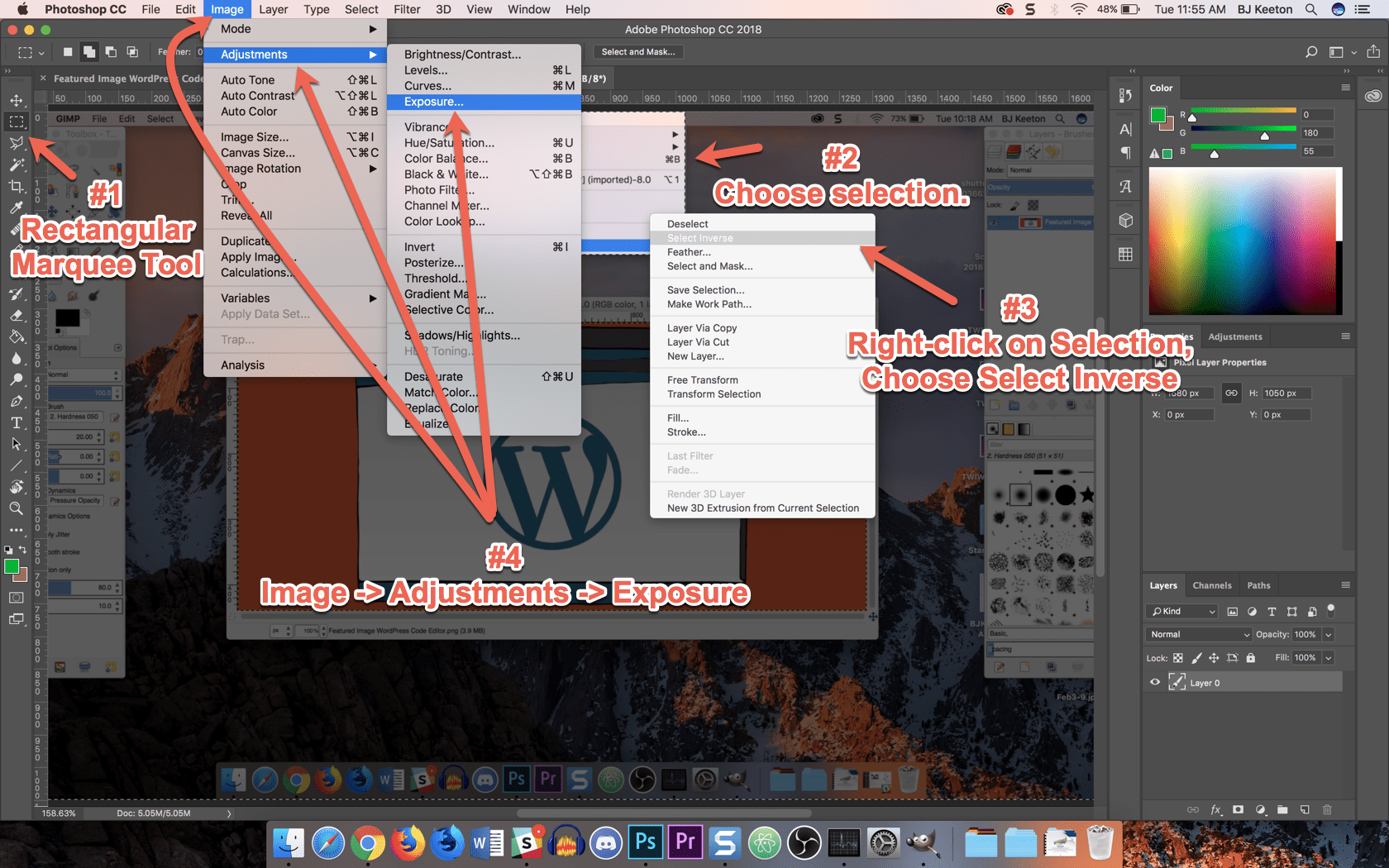

Photoshop’s interface feels less clunky, and as an industry standard, more familiar for experienced users.
Gimp photosho update#
That’s not to say GIMP never sees updates - in fact, the software usually sees some sort of minor or major update every few months, and plans for both non-destructive editing and CMYK support are in progress.
Gimp photosho manual#
Adobe also innovates at a blazing pace, and started integrating artificial intelligence into Photoshop several years ago with tools like Face-Aware Liquify, which automatically detects features of a person’s face and lets you resize the eyes, mouth, and nose without having to make any manual selections. GIMP also doesn’t handle CMYK color, doesn’t allow for non-destructive photo editing using adjustment layers, and requires plug-ins for some features that are built in to Photoshop. For example, GIMP has just one healing brush tool while Photoshop has four. It still offers layers, curves, filters, and many more tools that go well beyond basic.īut as the industry standard with a dedicated company making frequent updates, Photoshop is certainly the more powerful program. While not quite as advanced as Photoshop, GIMP isn’t just bare bones photo editing, either. If you just need to crop and resize a photo, GIMP can easily do the job. Tool-wise, GIMP can handle the same basic and mid-level edits, and in some cases, even the more advance edits that Photoshop can. The program is lightweight, so besides taking up less room on the computer, it’s also compatible with older computers and budget devices that may not have the RAM that Photoshop requires. Even if you don’t have the programming knowledge to adjust the open source code, GIMP has several plugins to expand features, while the user interface can also be easily customized. It also takes up less space on your hard drive.Īs an open source program, GIMP is easy to customize. But free doesn’t mean bad, and for some types of users, GIMP has all of the necessary essentials without needless bloat. GIMP, like other open source programs, tends to have fewer advanced features, since there’s no company motivated by a profit to continually improve it.

Photoshop has long been an industry standard for photo editing as well as graphic design. GIMP also needs a plug-in to convert and open RAW files, which, fortunately, is also free. It doesn’t include cloud storage nor its own RAW processor and organizer, though you can opt for an open source Lightroom competitor like RawTherapee. GIMP doesn’t offer as complete a package as the Creative Cloud Photography Plan. All of this adds up to an undeniably good value at $10 per month - but that still comes out to a more than free. The Photography Plan also includes Lightroom, a non-destructive RAW photo editor and organizer that integrates well with Photoshop Adobe Camera RAW for converting and opening RAW images in Photoshop and 20 gigabytes of cloud storage, to which you can add more for an additional fee. What’s more, the subscription model ensures you’re always running the latest version of the app. Fortunately, if you’re just in the market for Photoshop, the $10 Photography Plan is pretty easy to stomach. With the advent of the Creative Cloud, Adobe moved all of its major programs over to a subscription model, which means you’ll have to continue paying for it for as long as you want to use it, and those monthly fees will add up over time. While GIMP may be free, Photoshop is no longer the $700 program it once was. Lacks graphic design features, like CMYK.

Gimp photosho professional#
Gimp photosho code#
Besides the free price point, the open source design means that the program welcomes code adjustments, along with being available for Mac, Windows, and Linux. GIMP, which stands for GNU Image Manipulation Program, is an open source, free Photoshop alternative.


 0 kommentar(er)
0 kommentar(er)
